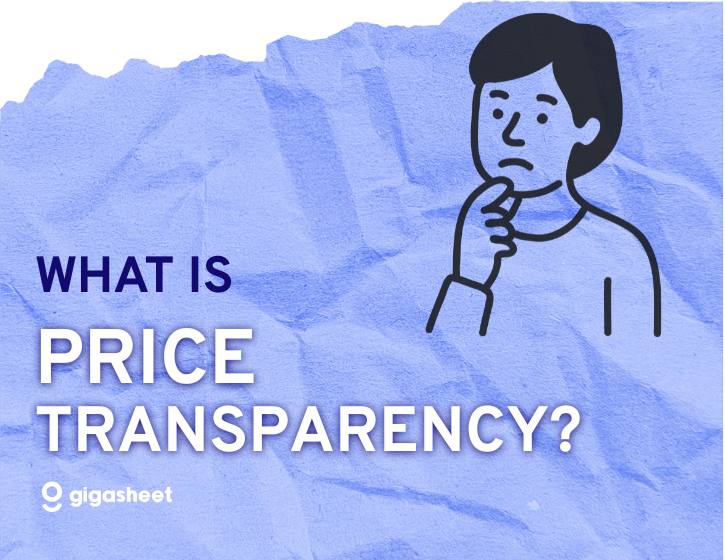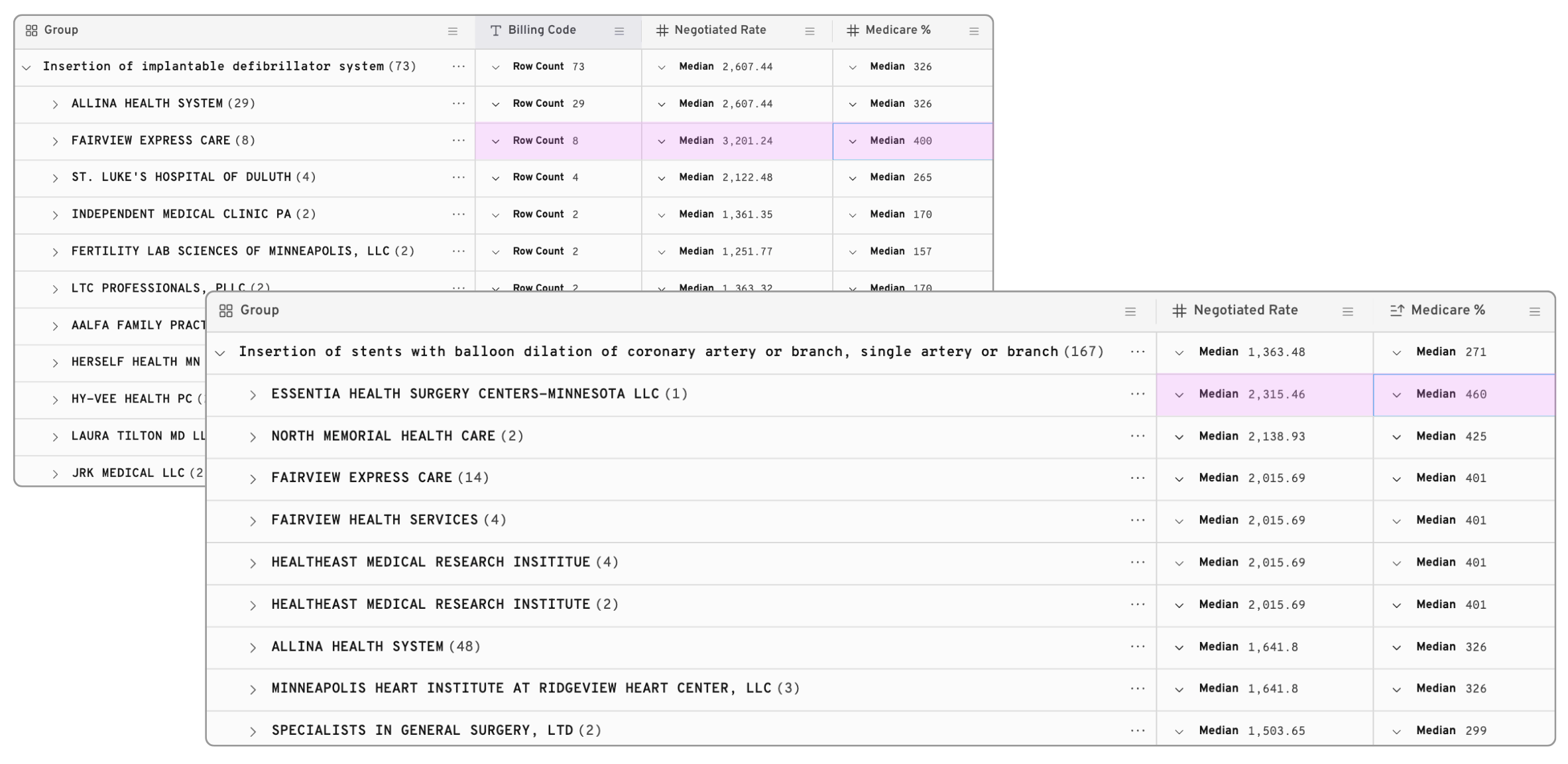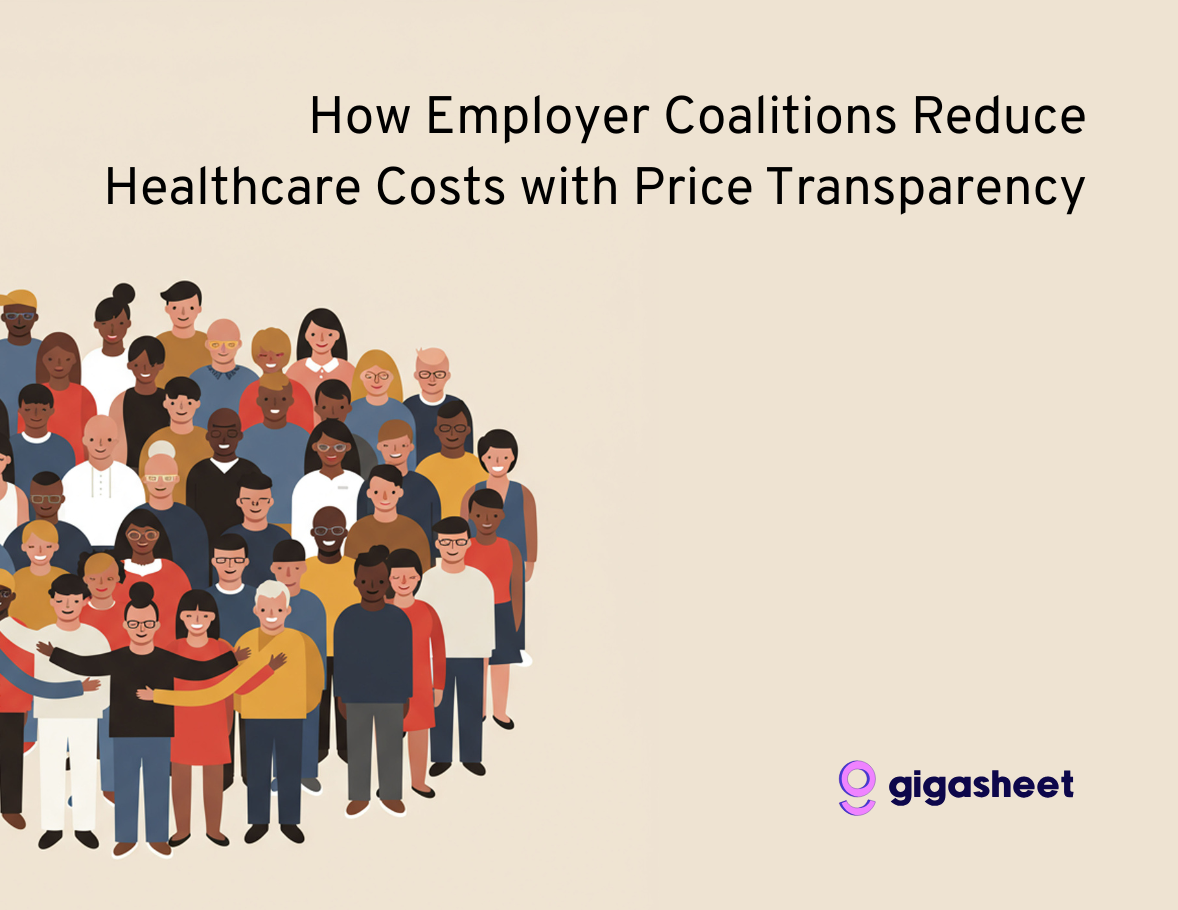Price Transparency
What Is Healthcare Price Transparency Data?

Healthcare price transparency data is structured information that reveals what hospitals, insurance companies, and other healthcare organizations actually charge for medical services, from negotiated rates between insurers and providers to standard charges and out-of-network allowed amounts. Federal regulations now require this once-confidential pricing to be published publicly, creating unprecedented visibility into healthcare costs.
For providers, payers, and employers, this data represents both an opportunity and a challenge: the opportunity to benchmark rates, negotiate better contracts, and identify market positioning, but the challenge of analyzing massive, complex datasets that often exceed gigabytes in size. This guide explains what healthcare price transparency data contains, why it matters, how organizations use it strategically, and what tools make analysis practical at scale.
What Is Healthcare Price Transparency Data
Healthcare price transparency data is structured information that reveals the actual costs of medical services: standard charges, negotiated rates between hospitals and insurance companies, and out-of-network allowed amounts. Federal regulations now require hospitals and health insurance plans to publish this information publicly in machine-readable files for analysts and consumer-friendly formats for patients. Think of it as pulling back the curtain on healthcare pricing: what was once hidden in confidential contracts is now available for anyone to examine and analyze.
The data typically comes in two formats. Machine-readable files (usually massive JSON or CSV documents) contain exhaustive details about every service a healthcare organization provides, designed for researchers, employers, and technology developers. Consumer-friendly displays, often called "shoppable services," present common procedures in an easy-to-compare format so patients can shop for care the same way they'd compare prices for anything else.
Why Price Transparency in Healthcare Matters for Costs and Competition
Price transparency fundamentally changes how healthcare markets operate by introducing visibility into previously hidden pricing arrangements. When organizations can see what competitors charge and what rates others negotiate, the entire market dynamic shifts.
Empowering Negotiations
Employers and insurance companies use transparency data to negotiate better rates with healthcare providers. A self-insured employer analyzing transparency files might discover they're paying significantly above-market rates for certain procedures, then use that evidence to renegotiate contracts. Payers can identify which providers offer competitive pricing and structure their networks accordingly, creating financial incentives for members to choose high-value care options.
Driving Market Competition
Public pricing information creates competitive pressure that didn't exist when rates remained confidential. Providers charging substantially more than their peers for comparable services face questions from patients, employers, and payers about their pricing rationale. Over time, this visibility encourages healthcare organizations to align their prices more closely with market norms, though the pace of change varies significantly across different markets.
Key CMS and Federal Rules Driving Data Availability
Several federal mandates created the current landscape of healthcare price transparency, each targeting different segments of the industry. The Centers for Medicare & Medicaid Services (CMS) enforces these regulations and monitors compliance.
Hospital Price Transparency Rule
Effective January 2021, this rule requires hospitals to publish machine-readable files containing all standard charges for items and services. Hospitals disclose gross charges, payer-specific negotiated charges, discounted cash prices, and de-identified minimum and maximum negotiated charges. The files typically contain millions of rows of data, with separate rates for each service-payer combination.
Transparency in Coverage Rule
This regulation targets health insurance companies and group health plans, requiring them to disclose in-network negotiated rates and out-of-network allowed amounts. Implementation began in July 2022, with full enforcement ramping up through 2023. Payers provide machine-readable files updated monthly, covering all covered items and services across their networks.
No Surprises Act
While primarily addressing surprise medical billing, this act complements transparency efforts by requiring advance cost estimates for scheduled services. Patients receive good faith estimates before care, reducing unexpected bills and reinforcing the broader transparency framework.
What Data Elements Appear in Hospital and Payer Files
The structure and components of transparency data files determine how organizations extract meaningful insights from massive datasets. Each file contains specific elements that paint a complete picture of healthcare pricing.
Standard Charges and Negotiated Rates
Standard charges represent the list prices hospitals establish for their services, similar to a sticker price before any discounts. Negotiated rates, however, reflect the actual amounts insurance companies agreed to pay for specific services, which often differ dramatically from standard charges. A single procedure might have dozens of different negotiated rates depending on which insurance plan covers the patient, creating complexity that makes analysis challenging without the right tools.
In-Network Versus Out-of-Network Allowed Amounts
In-network negotiated rates apply when patients use providers within their insurance network, representing contractually agreed-upon prices. Out-of-network allowed amounts indicate what insurers will pay for services from non-network providers, typically calculated as a percentage of Medicare rates or using other benchmarking methodologies. The distinction matters significantly for both patient cost-sharing and provider reimbursement.
Billing Codes and Service Descriptions
Services are identified using standardized medical coding systems:
- CPT codes: Current Procedural Terminology codes identify specific procedures and services
- DRG codes: Diagnosis-Related Group codes categorize inpatient hospital stays
- HCPCS codes: Healthcare Common Procedure Coding System codes cover supplies, equipment, and services not included in CPT
Each code links to service descriptions, though the level of detail varies across organizations. Some files include comprehensive descriptions while others provide only basic code identifiers, creating challenges for analysis.
File Formats and Size Considerations
Transparency files come primarily in JSON or CSV formats, though organizations use varying schemas and structures. Individual hospital files often exceed multiple gigabytes, while large health systems or national payers produce files reaching hundreds of gigabytes. Organizations refresh files monthly or quarterly, creating ongoing data management requirements. Each organization interprets regulatory requirements differently, resulting in inconsistent data structures across files that make standardized analysis difficult.
How Providers Use Pricing Transparency Data to Optimize Reimbursement
Healthcare providers increasingly recognize transparency data as a strategic asset for financial optimization and competitive positioning. The question isn't whether to analyze this data, but how to do it efficiently at scale.
Benchmarking Peer Rates
Hospitals compare their negotiated rates against competitors for identical services to understand their market position. A hospital might discover they're receiving $8,500 for a knee replacement while nearby facilities negotiate $11,000 for the same procedure with the same insurance company. This benchmarking reveals opportunities to renegotiate underperforming contracts and validates rates that already align with or exceed market standards.
Identifying Outlier Contracts
Analyzing transparency data surfaces unusual pricing arrangements that warrant immediate attention. Sometimes providers find they're significantly underpaid for high-volume services or overpaid for procedures they rarely perform. These outliers (whether favorable or unfavorable) signal contracts that need renegotiation or services where pricing strategies require adjustment.
Informing Value-Based Care Strategies
As healthcare shifts toward value-based payment models, understanding market pricing helps providers evaluate which services to emphasize and how to structure bundled payment arrangements. Transparency data reveals which procedures generate favorable margins and where efficiency improvements could enhance competitiveness without compromising care quality.
How Payers and Employers Leverage Healthcare Cost Transparency
Insurance companies and self-insured employers use transparency data to control costs and design more effective benefit structures. The insights gained from this data directly impact network design, plan performance, and member satisfaction.
Network Design and Tiering
Payers analyze competitor pricing to structure provider networks that balance cost and access. By identifying which hospitals offer competitive rates for high-quality care, insurers create tiered networks that steer members toward high-value providers through differential cost-sharing. A procedure might cost a patient $500 at a preferred-tier hospital but $2,000 at a standard-tier facility, even though both are in-network.
Self-Funded Plan Savings
Large employers bearing direct financial risk for employee healthcare costs use transparency data to identify savings opportunities. They might discover they're paying 40% above market rates for certain services and use that information to negotiate better terms or implement reference-based pricing strategies. Some employers even share pricing information directly with employees, encouraging them to choose cost-effective providers.
Steering Members to High-Value Care
Armed with pricing intelligence, payers develop programs that guide patients toward providers offering the best combination of cost and quality. Programs include decision-support tools, financial incentives for choosing efficient providers, or care navigation services that help members find high-value options.
Common Challenges With Medical Price Transparency Data
While transparency regulations created unprecedented access to healthcare pricing information, working with this data presents significant obstacles. Organizations quickly discover that having access to data doesn't automatically translate to actionable insights.
Data Volume and Complexity
The sheer scale of transparency files overwhelms traditional analysis tools and approaches. A single large health system might publish files containing 50 million rows of pricing data, updated monthly. Multiply this across hundreds of hospitals and dozens of major payers, and the data volume quickly becomes unmanageable without specialized infrastructure.
Variations in Schema and Naming
Despite federal requirements, organizations interpret and implement transparency rules differently, resulting in inconsistent data structures. One hospital might list "MRI brain without contrast" while another uses "Magnetic Resonance Imaging - Head" for the identical service. Variations make it difficult to compare pricing across organizations without extensive data normalization, a process that traditionally requires significant technical resources and time.
Ensuring Data Freshness and Accuracy
Organizations frequently struggle to maintain current, accurate transparency files. Missing information like incomplete service descriptions or blank rate fields creates gaps in analysis. Inconsistent formatting approaches to dates, currency, and categorical information require additional cleanup. Update delays leave analysts working with outdated pricing that doesn't reflect current market conditions.

Healthcare Transparency Tools and Techniques for Large-Scale Analysis
Successfully analyzing transparency data requires specialized approaches that address its unique challenges. Traditional business intelligence tools weren't built to handle the scale and complexity of healthcare pricing data.
Automated Normalization and Mapping
Modern analytics platforms use automated processes to standardize disparate data formats into consistent structures. Systems map varying service descriptions to common taxonomies, align different coding approaches, and create unified datasets from hundreds of source files. Without automation, the manual effort required for normalization makes comprehensive analysis impractical for all but the largest organizations with dedicated data teams.
Outlier Detection With AI
Artificial intelligence identifies pricing anomalies and opportunities that would be impossible to find through manual review. Machine learning models flag when a specific rate deviates significantly from market norms, detect patterns suggesting data quality issues, and surface contract terms that warrant investigation. AI-powered insights transform massive datasets into actionable intelligence without requiring analysts to manually review millions of rows.
Spreadsheet-Style Exploration at Gigabyte Scale
The most effective transparency analytics platforms combine the power to process billions of rows with the intuitive familiarity of spreadsheet interfaces. Business users can explore, filter, and analyze multi-gigabyte datasets without writing code or waiting for data engineering support. This approach democratizes access to transparency insights, enabling commercial teams, network managers, and finance analysts to work directly with the data rather than submitting requests and waiting for technical teams to deliver reports.
Ready to transform healthcare price transparency data into competitive advantage? Gigasheet's AI-powered platform makes it easy to analyze billions of rates, benchmark against competitors, and identify opportunities, all through an intuitive interface that requires no technical expertise.
Future Trends in Health Care Price Transparency
The transparency landscape continues evolving as regulators, technology providers, and healthcare organizations adapt to new requirements and opportunities. What started with hospitals and health plans will likely expand significantly in coming years.
Mandate Expansion to Additional Sites of Care
Current regulations focus primarily on hospitals and health plans, but momentum builds toward expanding requirements to ambulatory surgery centers, imaging facilities, and other outpatient settings. Expansions would create even more comprehensive pricing visibility across the healthcare delivery system, though they'd also multiply the data volume and complexity challenges organizations already face.
Greater Standardization Efforts
Industry groups and regulators are working toward more consistent data formats and schemas that would simplify analysis. Standardized approaches to service descriptions, coding, and file structures would reduce the normalization burden and make transparency data more immediately useful across different organizations and use cases.
Rise of Real-Time Pricing APIs
The future of transparency likely includes programmatic, real-time access to pricing information through APIs rather than static monthly file downloads. This shift would enable dynamic pricing comparisons, integration with clinical workflows, and more responsive market intelligence that reflects current market conditions rather than month-old snapshots.
Make Data Actionable With AI-Powered Insights From Gigasheet
Healthcare organizations face an unprecedented opportunity to use price transparency data for competitive advantage, but only if they can effectively analyze massive, complex datasets. Gigasheet transforms this challenge into a strategic asset through a platform built specifically for healthcare pricing intelligence.
The platform processes billions of healthcare rates across thousands of contracts, automatically surfacing opportunities through AI-powered outlier detection and market benchmarking. The spreadsheet-like interface makes transparency data accessible to business users. No data science expertise required. You can trace every insight back to its original source, ensuring confidence in your decisions and enabling you to verify findings when stakeholders ask questions.
Whether you're a provider optimizing reimbursement, a payer designing competitive networks, or an employer controlling healthcare costs, Gigasheet delivers the clarity you need to compete confidently. With SOC 2 Type II compliance and seamless enterprise integration, you get secure, reliable analytics that drive smarter business outcomes.
FAQs About Healthcare Price Transparency Data
How often are hospital and payer transparency files updated?
Most organizations update their transparency files monthly or quarterly to comply with federal regulations, though exact timing varies by organization. Payers typically update monthly while hospitals often refresh quarterly, creating challenges when trying to compare data across sources from different time periods.
What penalties apply if an organization fails to post required data?
CMS can impose monetary penalties on hospitals that fail to comply with transparency requirements, starting at $300 per day and potentially reaching over $2 million annually for large hospitals. Enforcement has increased significantly since initial implementation, with CMS actively monitoring compliance and issuing fines for non-compliant organizations.
Can smaller teams analyze multi-gigabyte pricing files without big data infrastructure?
Modern analytics platforms enable business users to explore large transparency datasets through intuitive interfaces without requiring specialized technical infrastructure or data engineering resources. Cloud-based solutions handle the computational complexity behind the scenes, allowing analysts to work with billions of rows as easily as they would with traditional spreadsheets.
The ease of a spreadsheet. The power of price transparency.



















